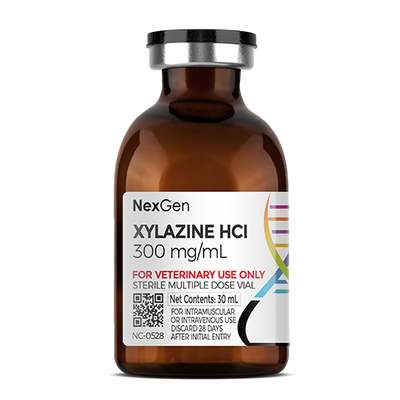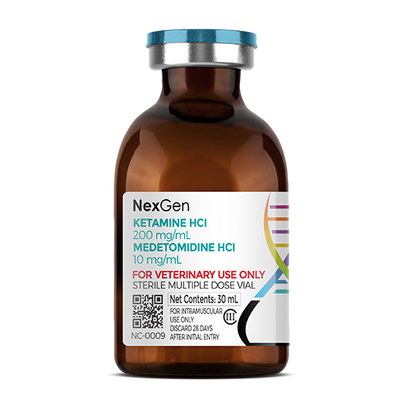
Tramadol HCl 50 mg/mL, Injectable Solution, 30mL
Login for pricing
- Brand
- NexGen
- SKU:
- NC-0515
- Product Type:
- Injectable
- Size:
- 30ml
- Administration:
- Intravenous
Assessing and addressing chronic pain is important for maintaining horses’ health and quality of life. Chronic pain is defined as pain that persists after a normal healing period and that persists or recurs for over 3–6 months.1 Most horse owners and managers can tell when a horse is experiencing pain because they are usually familiar with a horse’s normal behavior. In some cases, it is easy to determine that a horse is experiencing pain, but not as easy in others. Like humans and other animals, horses differ in their individual tolerance of pain and in their demonstration of its outward signs. Additionally, chronic pain probably affects most, if not all, geriatric horses, yet it can go unrecognized by horse owners.2
Individual pain tolerance and how horses demonstrate pain may also vary based on factors like the horse’s age, previous experiences and environment. Some non-painful stimuli (e.g., anxiety, fear) can also give rise to similar signs, making recognition of pain in horses challenging. Common indicators of pain can include:
- Elevated heart rate
- Elevated respiratory rate
- Sweating
- Dilated pupils
- Behavioral changes
- Ear position (Ears partially or fully back can be an indication of discomfort)
- Lameness, changes in movement
- Visceral signs (e.g., colic) – Pacing, rolling, pawing, or a horse kicking at its sides3
There are also a number of pain scales that are used to gauge the degree of pain in horses:
- Verbal or numerical rating scales. In the verbal scales, the letters A to F are often used, where A indicates no lameness and F is the inability of the horse to move. The American Association of Equine Practitioners (AAEP) lameness grading system is a numerical rating scale from 0 (no lameness) to 5 (minimal weight bearing in motion or complete inability to move).
- The Obel grading system primarily rates the degrees of lameness associated with laminitis. This system ranges from Grade I (frequent shifting of weight between feet, no lameness at the walk, and bilateral lameness at the trot) to Grade IV (a horse will walk only if forced to do so).
- The modified composite pain score (MCPS) is also to evaluate laminitic horses. This numerical rating scale ranges from 1 (no pain) to 10 (moderate to severe pain, irritable, restless).2
Opioids (opiates) are frequently used for treating pain in horses that is chronic or idiopathic (pain of unknown cause). Butorphanol (Torbugesic) is the only opiate currently labeled for horses, but the cost and risk for abuse by humans make its long-term use controversial.4 There are, however, other opioids that can be safely used extra-label that are effective in the management of chronic pain in the horse.
Where to buy Tramadol
Tramadol is available in the U.S. through pharmaceutical manufacturers and through veterinary custom compounding companies.
This product carries numerous potential drug interactions. Please consult your veterinarian prior to beginning any treatment regimen.
FOR RX ONLY: A valid prescription from a licensed veterinarian is required for dispensing this medication.
1Merksey H., Bogduk N. Classification of Chronic Pain. 2nd ed. IASP Press; Seattle, WA, USA: 1994.
3Lavand’homme P. The progression from acute to chronic pain. Curr. Opin. Anesthesiol. 2011;24:545–550.
4P. Cagnardi, C. Ferraresi, A. Zonca, A. Pecile, G. Ravasio, D.D. Zani & R. Villa (2014) Clinical pharmacokinetics of tramadol and main metabolites in horses undergoing orchiectomy, Veterinary Quarterly, 34:3, 143-1.




















